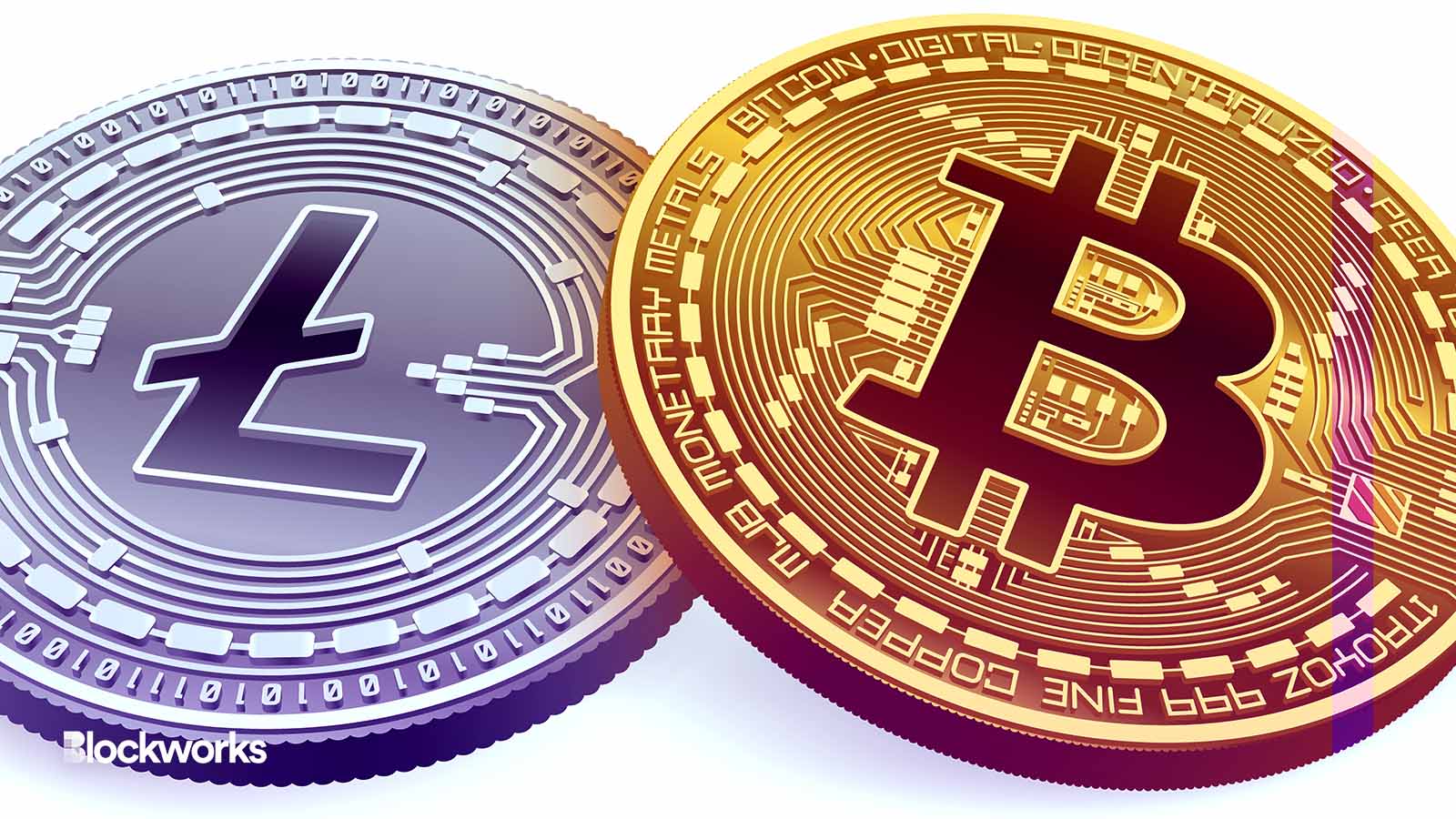Halvings Seem to Move Bitcoin and Litecoin in Very Different Ways
Litecoin is silver, Bitcoin is gold, except their issuance slows down dramatically every four years, thanks to halvings

Iurii Motov/Shutterstock modified by Blockworks
Ask superstitious Bitcoin fans about halvings and they’ll say they’re outrageously bullish, historically marking the onset of monumental price rallies.
What about Litecoin halvings?
Bitcoin’s fourth halving event — which will again slash BTC issuance by 50% — is expected to hit this time next year. But spinoff blockchain Litecoin (LTC) will see its own halving in 100 days.
Halvings occur every four years (every 210,000 blocks for Bitcoin, 840,000 blocks for Litecoin). Bitcoin’s issuance will drop from 6.25 BTC ($171,000) per block to 3.125 BTC ($85,400), while Litecoin’s will go from 12.5 LTC ($1,100) to 6.25 ($550).
All Bitcoin and Litecoin halvings have coincided with epic bull markets. Blockworks analyzed price data starting six months before each halving and encompassing up to one year after. BTC exploded up to:
- 20,000% around the 2012 event;
- 560% across the 2016 halving and;
- 780% over the 2020 episode.
Most of BTC’s gains were seen almost a full year after each halving took place. Litecoin halvings have also aligned with similar bullishness, but in a very different pattern.
Unlike bitcoin’s after-the-fact rallies, LTC has pumped the hardest in the six months before its halvings occurred.
There does not appear to be a distinct pattern in LTC’s price performance in the year following each event. But the six months leading up to both halvings were eerily similar.
- LTC peaked at about 320% gains roughly 45 days out from each halving.
- It gave up most of those returns in the month directly after.
- LTC rounded out the year after each event up between 80% and 110%.
Bitcoin and Litecoin share source code (and halvings)
Riyad Carey, research analyst at Kaiko, told Blockworks that halvings have been historically bullish catalysts for both BTC and LTC.
“The timing of these halvings is quite interesting: ETH recently moved away from proof-of-work, which helped propel both Bitcoin and Litecoin’s hash rates to all-time highs as miners looked for alternatives,” Carey said.
There are other concerns: Bitcoin mining profitability tends to shrink after each block reward reduction, as miners are increasingly relying on transaction fees for revenue as they wait for speculative market prices to catch up to profitability.
Carey continued: “Litecoin was for many years a top-five token but has since lost that position to newer, primarily Layer-1, tokens. A pre-halving price rally could generate some excitement and potentially attract miners if they look for alternatives to Bitcoin.”
Halvings are indeed just one factor impacting price, alongside macroeconomic environment, correlation with tech stocks, trends in investor adoption and, increasingly, the business savvy of major crypto companies (or the lack thereof).
It is also worth stressing that the sample size of Bitcoin and Litecoin halvings are incredibly small, which renders realistic conclusions difficult to grasp.
Litecoin launched in 2011, not by hard forking the Bitcoin blockchain (as is the case with Bitcoin Cash and the like), but by creating a direct fork of its source code.
Litecoin developers, led by founder Charlie Lee, made small changes to Bitcoin’s original codebase. Namely faster block times (every 2.5 minutes compared to Bitcoin’s 10 minutes, on average) and a higher supply cap (84 million to Bitcoin’s 21 million).
Litecoin’s value proposition was once that it could serve, in some sense, as a spiritual sister network, handling smaller transactions faster and cheaper than Bitcoin, while also acting as a store of value.
The advent of the Lightning Network shifted that narrative somewhat. Litecoin eventually grew to be a primary testing ground for potential Bitcoin upgrades — privacy focused technology MimbleWimble being one example.
There are differences, but the general concept is the same: Distribute cryptocurrency to proof-of-work miners as payment for validating transactions and securing the network against 51% attacks.
Different crypto, different investors
Halvings cut those miners’ block rewards in half, leading to a boost to scarcity. As Kaiko’s Carey mentioned, mining profit margins are simultaneously narrowed, especially in Bitcoin’s case; there are less rewards for the same energy-intensive operations.
Unless, of course, prices surge dramatically to make up the difference.
“There clearly are speculators who dabble in Bitcoin in a big way, just as they dabble in Litecoin and other coins, but I would argue that the fundamentals of BTC are the strongest,” Bob Ras, co-founder at tokenized security startup Sologenic, told Blockworks.
“And because the fundamentals are strong with BTC, this means that it’s only natural the impact from the halving is experienced afterwards instead of before.”
Litecoin tends to rally hard leading up to its halvings because its users are mostly speculators, Ras reasoned, “playing ping pong of sorts” until LTC whales begin dumping after the halving.
Bitcoin sees “mega surges” following its own halvings due to their “dramatic impact on supply and scarcity,” Ras said.
“After all, a lot of Bitcoin is self-custodied and therefore the availability of BTC on exchanges is relatively less on a proportional basis. So when that supply shock kicks in, and if demand stays the same or increases, then the only option is that of fireworks.”
As tempting as it is to see the face of god in market reactions to halvings, correlation does not necessarily imply causation, and these milestones are no different — be they Bitcoin or Litecoin.
Still, a wise investor would strap in for increased volatility. The halvings are coming.
Get the news in your inbox. Explore Blockworks newsletters:
- The Breakdown: Decoding crypto and the markets. Daily.
- 0xResearch: Alpha in your inbox. Think like an analyst.






